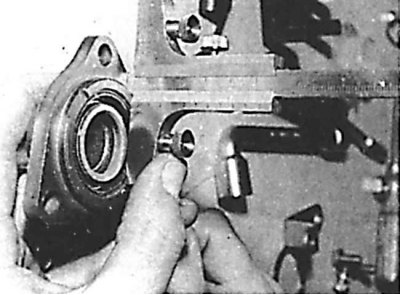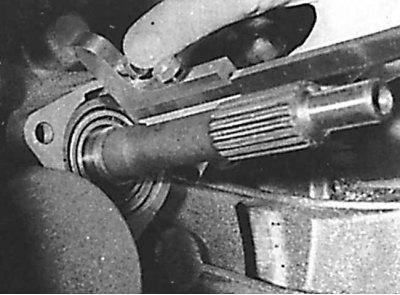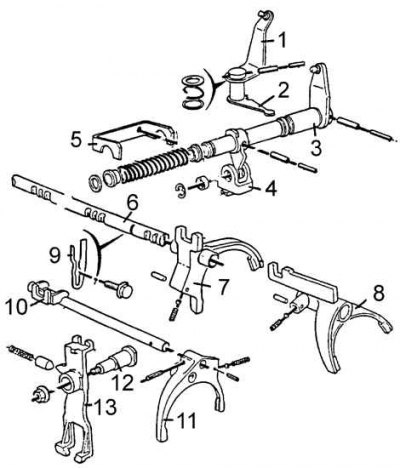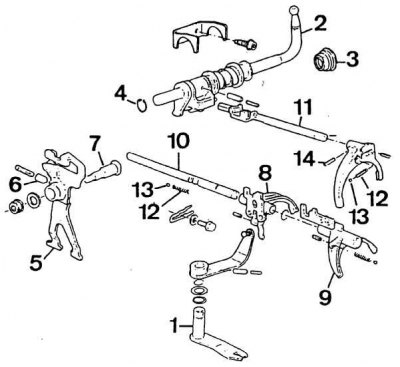Measuring the input shaft bearing preload - measuring the release bearing guide flange

Measuring the input shaft bearing preload - measuring the distance between the bearing outer ring and the crankcase joint surface

Gear shift mechanism

1 - shift lever rod, 2 - reverse gear lock sleeve, 3 - reverse gear lock cable, 4 - gear selection rod, 5 - intermediate element, 6 - gear select connector, 7 - gear select lever, 8 - intermediate gear shift lever, 9 - intermediate connector of the external gearshift mechanism, 10 - selector axle lever, 11 - bracket, 12 - selector axle and pin, 13 - key
Internal shift mechanism (gearbox BE 3)

1 - selector lever, 2 - selector shaft, 3 - sealing ring, 4 - fastening ring, 5 - intermediate reverse gear lever, 6 - cotter pin, 7 - axle, 8 - gear forks 1-2, 9 - gear forks 3-4, 10 - axle of gear forks 1-2 and 3-4, 11 - axle of gear forks 5, 12 - spring, 13 - blocking ball, 14 - pin
1. Remove the release bearing guide bush. If signs of wear are found, it should be replaced.
2. Install spacer 8.0317 K 2.4 mm thick behind the release bearing guide bush. Fasten the guide sleeve, observing the required screwing torques.
3. Using a depth gauge, measure the fit of the bearing relative to the surface of the crankcase, as well as the flange of the guide sleeve of the release bearing without its seal. To determine the bearing preload, calculate the difference and add 0.03 mm to the resulting value (paper seal thickness).
4. Replace the O-ring of the release bearing guide (shank 8.0317 N).
5. Install gasket of calculated thickness, seal and guide bush. Tighten the three bolts to 12.5 Nm.
6. Secure the clutch release linkage, release bearing and, to prevent movement that could interfere with transmission installation, attach the linkage to the crankcase.
